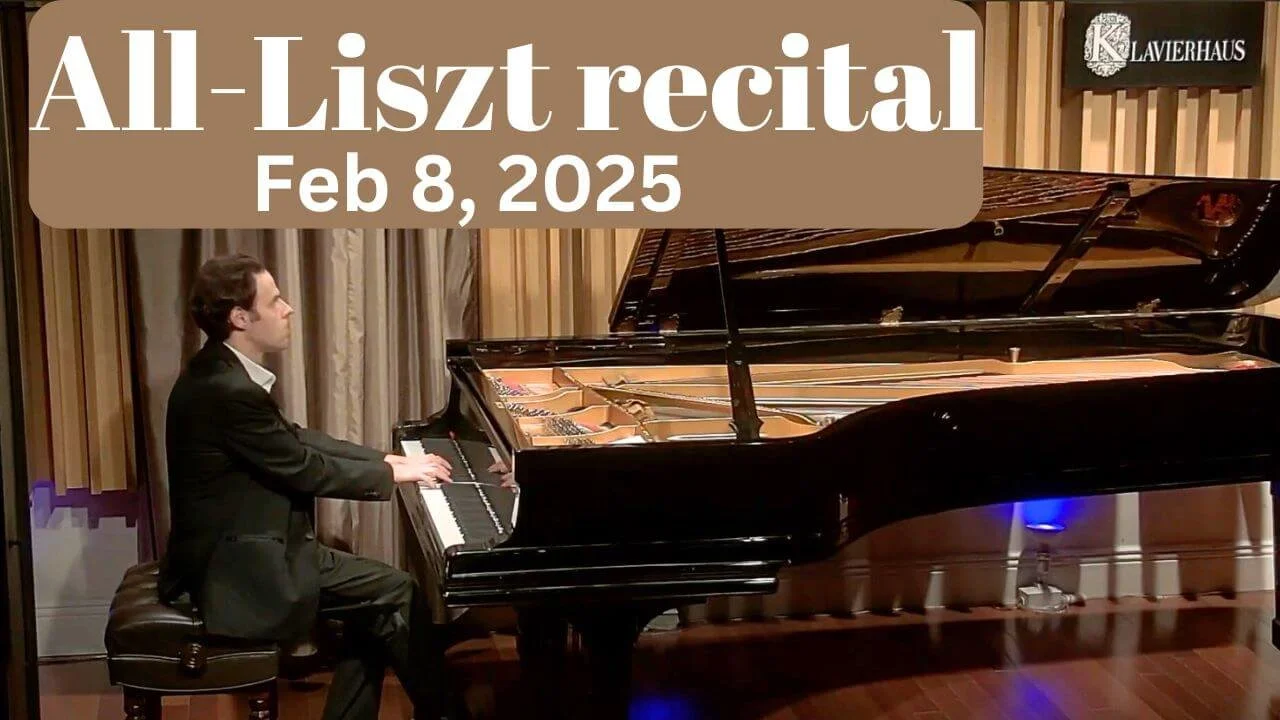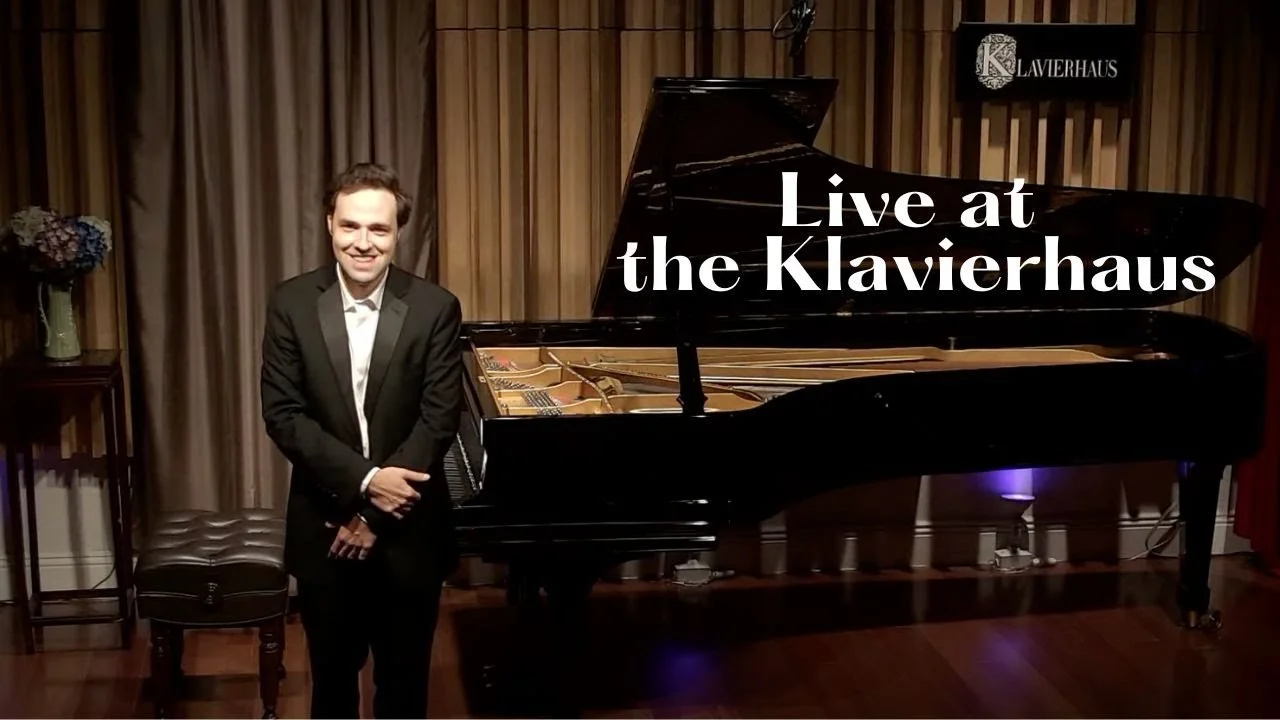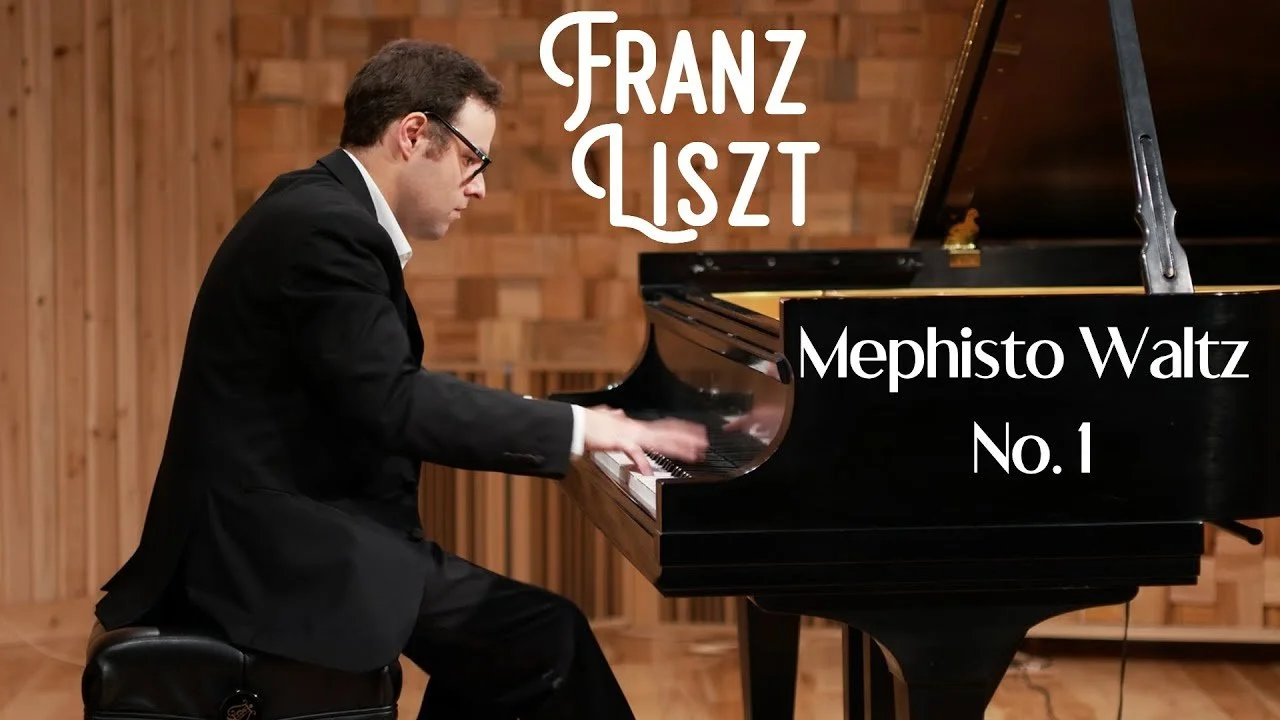
Franz Liszt Danse macabre – Poème symphonique de Camille Saint-Saëns, S.555
From a recording session of the album Michael Kaykov plays Liszt: Two Episodes from Lenau's Faust and Other Piano Works). Watch on YouTube.
The unaltered Liszt transcription (composed c. 1876) of this famous orchestral masterwork is played (and recorded) far less often than the celebrated 1942 Vladimir Horowitz reworking of it. Liszt expanded the Saint-Saëns tone-poem considerably, adding in transitions between sections and writing an extended coda. Those interested in the art of piano transcription can learn a great deal by examining this masterpiece.

All-Liszt Recital
May 3, 2025: Part 1
Klavierhaus (NYC) 790 11th Ave, New York, NY 10019
Chapelle de Guillaume Tell, S.160
Aux cypres de la Villa d'Este. Threnodie I, S.163
Orage, S.160
Elegy No. 2, S.197
Leyer und Schwerdt (Heroide nach Carl Maria von Weber), S.452
Album Leaf “Schlusschor des entfesselten Prometheus”, S.167q
All-Liszt Recital
May 3, 2025: Part 2
Fanfare zur Enthüllung des Carl-Augusts Monument, S.542b
Album Leaf “Poco Adagio”, S.167c
Gaudeamus igitur – Humoreske, S.509
Trois Chansons, S.510a: La consolation, Avant la bataille, L’espérance
Zwei Stücken aus der heiligen Elisabeth, S.693a: Das Rosenmirakel
Caritas nach Rossini, S.552a (first version)

All-Liszt Recital
February 8, 2025
Klavierhaus (NYC) 790 11th Ave, New York, NY 10019
Chapelle de Guillaume Tell, S.160
Sonetto 123 del Petrarca, S.161
Orage, S.160
Schlummerlied mit Arabesken (after Weber), S.454
Hungarian Rhapsody No. 17, S.244
Hungarian Rhapsody No. 18 (early draft), S.144
Fanfare zur Enthüllung des Carl-Augusts Monument, S.542b
Album Leaf "Poco Adagio: S.167c
Schnitterchor aus Prometheus’, S.507a
Trois Chansons S.510a: La Consolation
Trois Chansons: Avant la Bataille
Trois Chansons: L’espérance
Album Leaf “An Die Kunstler III”, S.166t
Zwei Stücken aus der heiligen Elisabeth: Das Rosenmirakel, S.693a
Album Leaf “An Die Kunstler IV”, S.166t
Impromptu in F sharp major, S.191
Album Leaf “An Die Kunstler V”, S.166t
March Heroique, S.510
LIVE STREAM also archived on the Klavierhaus Youtube Channel

All-Liszt Recital
October 26, 2024
Klavierhaus (NYC) 790 11th Ave, New York, NY 10019
Opening remarks by Jed Distler
Chapelle de Guillaume Tell, S.160
Sonetto 123 del Petrarca, S.161
Aux cypres de la Villa d’Este: Threnodie I, S.163
Toccata, S.197a
Elegy No. 2, S.197
Schlummerlied mit Arabesken (after Weber), S.454
Hungarian Rhapsody No. 17, S.244
Hungarian Rhapsody No. 18 (early draft), S.144
Fanfare zur Enthüllung des Carl-Augusts Monument, S.542b
Album Leaf "Poco Adagio: S.167c
Schnitterchor aus Prometheus’, S.507a
Trois Chansons S.510a: La Consolation
Trois Chansons: Avant la Bataille
Trois Chansons: L’espérance
Zwei Stücken aus der heiligen Elisabeth: Das Rosenmirakel, S.693a
Impromptu in F sharp major, S.191
March Heroique, S.510
In Festo Transfigurationis Domini Nostri Jesu Christi, S.188
LIVE STREAM also archived on the Klavierhaus Youtube Channel

All-Liszt Recital
September 2, 2023
Klavierhaus (NYC) 790 11th Ave, New York, NY 10019
Sarabande und Chaconne aus dem Singspiel Almira, S.181
Impromptu, S.191
Toccata, S.197a
Hungarian Rhapsody No. 19 in D minor, S.244
Csardas macabre, S.224
In festo transfigurationis Domini nostri Jesu Christi, S.188
Mephisto Polka, S.217
Trauervorspiel und Trauermarsch, S.206
Mephisto Waltz No. 3, S.216
Polonaise from Tchaikovsky’s Eugene Onegin, S.429
LIVE STREAM also archived on the Klavierhaus Youtube Channel

All-Liszt Recital
March 30, 2024
Klavierhaus (NYC) 790 11th Ave, New York, NY 10019
Hungarian Rhapsody No 17, S.244
Toccata, S.197a
Elegy No.2, S.197
Transcendental Etude No 4 “Mazeppa”, S.139
Chapelle de Guillaume Tell, S.160
Sonetto 123 del Petrarca, S.161
Aux cypres de la Villa d'Este. Threnodie I, S.163
Bagatelle sans tonalité, S.216a
Impromptu in F-sharp major, S.191
Grand Galop Chromatique, S.219
In festo transfigurationis Domini nostri Jesu Christi, S.188

Frédéric Chopin: Scherzo No. 1 in B minor, Op. 20 (from a recording session for the 2023 all-Chopin album)
This scherzo, composed in around 1831, features an ABA form. The A section is dramatic and blazing, while the mellow B section quotes a Polish Christmas carol. The work, written during the 1831 uprising against the Russian empire, was dedicated to Thomas Albrecht, who convinced Chopin to stay in Vienna.

Franz Liszt: Bagatelle sans tonalité, S216a (from 2021 all-Liszt album)
This remarkable work, composed c. 1885 and published only by 1956, does not have an identifiable diatonic “key”, hence the title. However, there work is centered around the B-F tritone which is fleshed out into the diminished seventh chord: B-D-F-G#. Liszt’s use of the octatonic scale and unusual chord in versions predates many of the harmonic developments more closely associated with early 20th century music.

Alexander Scriabin: Piano Sonata No. 6, Op. 62 (from a 2021 recording session)
The 6th Sonata, Op. 62, composed in 1911, is Scriabin’s first sonata featuring a new principle of tonal organization, one which completely avoids the use of diatonic scales and “traditional” bass motion by fourths and fifths. My published articles (click here to read) may provide some theoretical background necessary to delve into Scriabin's late-period works (starting from Op. 59).












